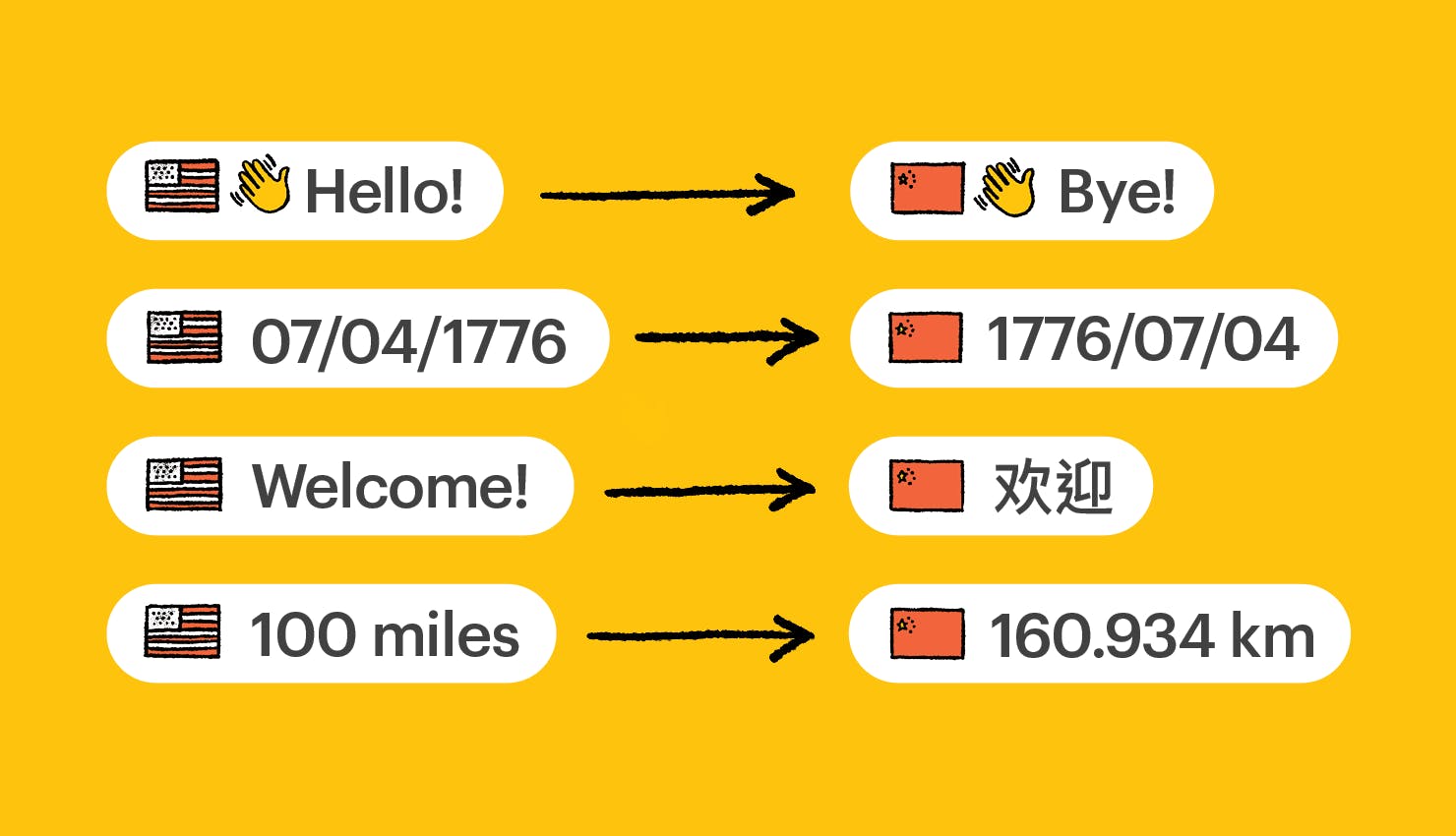This article was first published at Aviyel
Everyone feels comfortable when they are in their hometown. The people they know, the culture they are familiar with, and the language they know from their birth, definitely feel safe and comfortable. It's the same when it comes to software. People will surely prefer a website or software if they are in their local language and if it gives off their cultural vibe.
Studies show that around 92% of people prefer to shop and make purchases on sites that price in their local currency
Softwares need to be linguistically, culturally, and technically adapted, they need to be "Localized"
What exactly is Software Localization?
Now the question is what exactly is software localization. Software localization is nothing but a process of adapting software to both the culture and language of an end-user. It's not just a mere translation but also a design and UX change that completely feels natural to the target users.

It may occur to some as just a few translations here and there in the software will do the trick. But surprise.. surprise... it's not as simple as it looks. Let's just take an example of a button. Just translating the button won't be enough. The placement, the size, the color, the design, the interaction, everything matters. All these small yet incredibly important changes can easily make the target users feel natural.
As you may have thought it definitely doesn't involve any backend logical changes. It's purely the look and feel of the software where the "localization" comes into place. Make no mistake, localization is quite a complex process.
Why do we need Software Localization?
Make no mistake, globalization is as important as ever. Technology lets us communicate across international boundaries. Globalization simply means a potentially unlimited market.
However, one of the key aspects of a successful application or software is that it is more and more specialized for its target audience. The specialties that you might have put into your software may not be special when the market changes and the preferences are different.
The impact of your product or software on international customers may differ based on whether you have localized it or not. The impact will be highly positive if it's adapted to the local environment and it surely increases the sales. A poorly localized software can even impact global sales and brand loyalty.
When your software is easy to use, it gives off a natural feel, and it's easier to recommend and more likely it may help us to create a global success story.
Key focus points on software localization
You might say this is no rocket science, but sometimes even people having experience in this area are unaware of certain pitfalls. Let's have a look at several aspects that deserve special attention when localizing your software.
Text
Prepare your text for a multilanguage environment. At a glance, it may seem the development is done when you have a working product, everything labeled perfectly with cool-looking wordings and buttons. But, hey, think again, it's in English. What about when translating it to Portuguese or Arabic?
Now that will be a surprise for you. Your button labels may not be able to contain them. Texts may overflow over your containers. You see, some languages have 30% more characters than their English counterparts. That simply means the string length may vary significantly depending on the language.

The placement of text on the screen varies differently when the reading direction changes. The reading direction is right-to-left for languages like Arabic. You may also come across a situation where top-to-bottom direction is needed like for Mandarin.
At times like this is where testing shines the best. Psudolocalization is a testing technique that you could use to overcome this problem. It will highlight weak places of the text, such as varying word length, character width, and writing direction.
You need to recognize how the differently-aligned language will look on the screen and how this will impact your software. You also have to know how native language speakers interact with written content, so that you can optimize the experience for the better.
Graphic Design
It's not just the text that you can adapt to the local environment, even non-linguistic elements can be adapted to your user interface. And you should make sure that any image that makes sense and are not offensive to your target demographic.
When misused, symbols and imagery can be really confusing. Some symbols that you might be familiar with may not have any meaning in other countries. The hand gesture that symbolizes "OK" is something that you all might be familiar with, but it's an offensive sign in some countries. It makes no sense right? With that alone, we can conclude that even your choice of images can be controversial in other countries.

It’s absolutely crucial that your symbolism doesn't include anything controversial or religious at all. That's a hot button, you never wanna go there. Localizing non-linguistic elements can sound a bit challenging, but with enough research and testing, you could make it to your advantage.
User Experience (UX)
Now we shouldn't forget about an integral part of the software, the User Experience, do we? User experience matters a lot. The way that information is organized and how the user interacts with it may vary from region to region.
This can differ significantly between cultures. For example, Japanese users often prefer to have more information visible to them in the form of information boxes, sidebars, or hyperlinks. A more sparse and streamlined design that would be popular elsewhere might leave them feeling like they lack the necessary information they need to proceed. This could really affect your conversion rates.

Now jumping to a conclusion on your own is a pretty serious bad habit. You should be doing research on what your end users really want to see. Interact with your target audience, talk with them, get to know their preferences, and how they wish to interact with your product, collect samples, and take surveys. All of these will help you determine how you should proceed.
Simple research should uncover the unspoken conventions that could guide your software design in such a way that you could structure the product that puts users at ease and give you a solid foothold in your market.
Closing
Hopefully, now you might have gotten a general idea about localization. Now you know it's not a subject that you should take lightly. It matters a lot, it can determine your success or failure in a market. We are talking about sales here, money, it does matter a lot.
In this article, I gave you an intro to software localization. It's what's and why's and some of its key focal points. We haven't even really touched the tip of the iceberg, there is a lot more to software localization than you think. It is one of the best ways to win over your customers and have a set of loyal customers.
If you found this article helpful, please like and share. I would also love to introduce you to Tolgee, an open-source localization tool, that got onboarded at AviyelHQ recently. If you are an open-source lover like me do check out the projects at AviyalHQ and give us a follow on Twitter
Feel free to check out the awesome open-source projects that we have onboarded at Aviyel!

